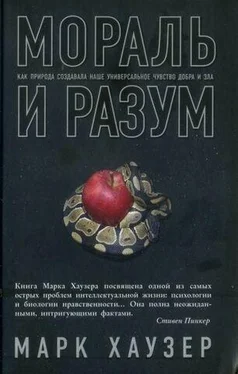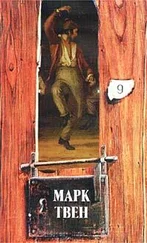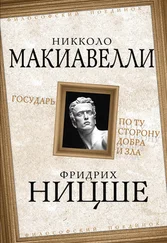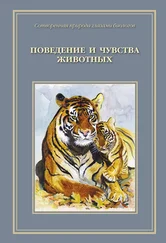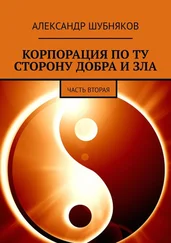Leslie A. M. (2000). Theory of mind as a mechanism of selective attention // M. Gazzaniga (Ed.), The New Cognitive Neurosciences (p. 1235—1247). Cambridge, MA: MIT Press.
Leslie A. M. & Keeble S. (1987). Do six-month-old infants perceive causality? // Cognition, 25, 265—288.
Leslie A. M., Knobe J. & Cohen A. (in press). Acting intentionally and the side-effect effect: ‘Theory of mind’ and moral judgment // Psychological Science, still in press.
Lewis M., Sulivan M. W. & Brooks-Gunn J. (1985). Emotional behavior during the learning of a contingency in early infancy // British Journal of Developmental Psychology, 3, 307—316.
Lewis R. J. (2002). Beyond dominance: the importance of leverage // Quarterly Review of Biology, 77, 149—164.
Lieberman D., Tooby J. & Cosmides L. (in press). Does morality have a biological basis? An empirical test of the factors governing moral sentiments relating to incest // Proceedings of the Royal Society, London, B, 270, 819—826.
Lieberman N. & Klahr Y. (1996). Hypothesis testing in Wason’s selection task: social exchange cheating detection or task understanding? 11 Cognition, 58, 127—156.
Litowitz D. (1997). The trouble with ‘scarlet letter’ punishments // Judicature, 81 (2), 52—57.
Mackie J. (1977). Ethics: inventing right and wrong. London: Penguin.
Macnamara J. (1990). The development of moral reasoning and the foundations of geometry // Journal for the Theory of Social Behavior, 21, 125—150.
Markus H. R. & Kitayama S. (1991). Culture and self: implications for cognition, emotion, and motivation // Psychological Review, 98, 224—253.
Marler Р. у Karakashian S. & Gyger М. (1991). Do animals have the option of withholding signals when communication is inappropriate? The audience effect // C. Ristau (Ed.), Cognitive ethology: the minds of other animals (p. 135— 186). Hillsdale, NJ: Lawrence Erlbaum Associates.
Marlowe F. (2004). Better to receive than to give: How the Hadzaplay the game. Unpublished manuscript, Cambridge, MA.
Martau P.A. у Caine N. G. & Candland D. K. (1985). Reliability of the emotions profile index, primate form, with Papio hamadryas, Macaca fuscata, and two Saimiri species // Primates, 26, 501—505.
Mason G. J.y Cooper J. & Clarebrough C. (2001). Frustrations of fur-farmed mink // Nature, 410 , 35—36.
Mason H. E. (1996). Moral Dilemmas and Moral Theory. New York: Oxford University Press.
May L.y Friedman M. & Clark A. (1996). Minds and Morals. Cambridge, MA: MIT Press.
Mayell H. (2002). Thousands of women killed for family “honor”. Available: http://news.nationalgeographic.com/news/2002/02/0212_020212_honorkilling.html.
Mazur J. E. (1987). An adjusting procedure for studying delayed reinforcement // M. E. Commons & J. E. Mazur & J. A. Nevin & H. Rachlin (Eds.), Quantitative Analyses of Behavior (p. 55—73). Hillsdale NJ: Lawrence Erlbaum Associates.
McAlpine L. M. & Moore C. L. (1995). The development of social understanding in children with visual impairments //Journal of Visual Impairment and Blindness, 89, 349—358.
McCabe K. A., Houser D. y Ryan L.y Smith V. L. & Trouard T. (2001). A functional imaging study of cooperation in two-person reciprocal exchange // Proceedings of the National Academy of Sciences, USA, 98у 11832—11835.
McCleam G. E. (1997). Substantial genetic influence on cognitive abilities in twins 80 or more years old // Science, 276, 1560—1563.
McGrew W. C. & Feistner A. T. C. (1992). Two nonhuman primate models for the evolution of human food sharing: chimpanzees and callitrichids //J. H. Barkow & L. Cosmides & J. Tooby (Eds.), The Adapted Mind (p. 229—249). New York: Oxford University Press.
Mead G. H. (1912). The mechanism of social consciousness //Journal of Philosophy, Psychology, and Scientific Methods, 9, 401—416.
Mehlman P. T. y Higley J. D., Faucher l.y Lilly A. A., Taub D. M.y Vickers /., Suomi S. J. & Linnoila M. (1994). Low CSF 5-HIAA concentrations and severe aggression and impaired impulse control in nonhuman primates // American Journal of Psychiatry, 151, 1485—1491.
Mehlman P. T, Higley J. D., Faucher /., Lilly A. A ., Taub D. M.y Vickers Suomi S. J. & Linnoila M. (1995). Correlation of CSF 5-HIAA concentration with sociality and the timing of emigration in free-ranging primates // American Journal of Psychiatry, 152, 907—913.
Mele A. (2001). Acting intentionally: probing folk notions // B. F. Malle & L. J. Moses & D. Baldwin (Eds.), Intentions and Intentionality: Foundations of Social Cognition (p. 27—43). Cambridge, MA: MIT Press.
Mendres K. A. & de Waal F. В. M. (2000). Capuchins do cooperate: the advantage of an intuitive task // Animal Behaviour, 60, 523—529.
Metcalfe J. & Mischel W. (1999). A hot/cool-system analysis of delay of gratification: dynamics of willpower // Psychological Review, 106 , 3—19.
Mikhail J. M. (2000). Rawls’ linguistic analogy: A study of the ‘generative grammar’ model of moral theory described by John Rawls in ‘A theory of justice’. Unpublished PhD, Cornell University, Ithaca, NY.
Mikhail J. M. (2002). Law, science, and morality: a review of Richard Posner’s “The Problematics of Moral and Legal Theory” // Stanford law Review, 54, 1057— 1127.
Mikhail J. M. (in press). Rawls’ linguistic Analogy. New York: Cambridge University Press.
Mikhail J. M. y Sorrentino C. & Spelke E. (2002). Aspects of the theory of moral cognition: Investigating intuitive knowledge of the prohibition of intentional battery, the rescue principle, the first principle of practical reason, and the principle of double effect. Unpublished manuscript, Stanford, CA.
Milgate D. E. (1998). The flame flickers, but burns on: modern judicial application of the ancient heat of passion defense // Rutgers Law Review, 57, 193—227.
Milgram S. (1974). Obedience to Authority: An experimental view. New York: Harper and Row Publishers.
Milinski M. (1981). Tit for tat and the evolution of cooperation in sticklebacks // Nature, 325, 433—437.
Milinski M. y Semmann D. & Kramheck H.-J. (2002). Reputation helps solve the ‘tragedy of the commons’ // Nature, 475, 424—426.
Miller D. & Walzer M. (1995). Pluralism, Justice and Equality. Oxford: Oxford University Press.
Mineka S. y Davidson M. y Cook M. & Keir R. (1984). Observational conditioning of snake fear in rhesus monkeys //Journal of Abnormal Psychology, 93, 355—372.
Mineka S. y Keir R. & Price V (1980). Fear of snakes in wild and laboratory reared rhesus monkeys (Macaca mulatto) // Animal Learning and Behavior, 8 y 653— 663.
Minter M. y Hobson R. P. & Bishop M. (1998). Congenital visual impairment and ‘theory of mind’ // British Journal of Developmental Psychology, 76, 183—196.
Mischel W. (1966). Theory and research on the antecedents of self-imposed delay of reward // B. A. Maher (Ed.), Progress in Experimental Personality Research (p. 85—132). New York: Academic Press.
Читать дальше
